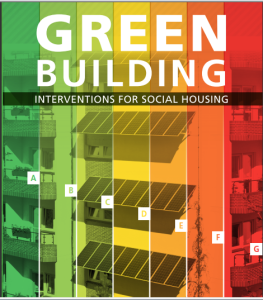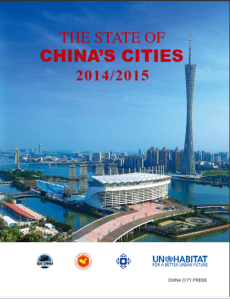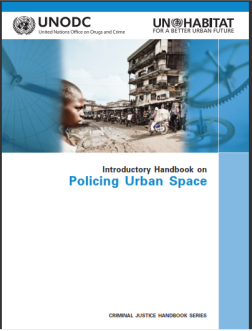 ” 32% of global urban population lives in urban slums. If no meaningful action is taken, the United Nations reports that the number of slum dwellers worldwide may double over the next 30 years. Responses to this problem have to be holistic, multi-level and interdisciplinary, and must acknowledge local cultural, economic, legislative and environmental factors. Sustainable housing should be seen as a comprehensive process accounting for environmental, social, cultural, economic and institutional considerations.
” 32% of global urban population lives in urban slums. If no meaningful action is taken, the United Nations reports that the number of slum dwellers worldwide may double over the next 30 years. Responses to this problem have to be holistic, multi-level and interdisciplinary, and must acknowledge local cultural, economic, legislative and environmental factors. Sustainable housing should be seen as a comprehensive process accounting for environmental, social, cultural, economic and institutional considerations.
There is an urgent need to find housing solutions that do not impact adversely on housing affordability and enhance urban livelihoods. Moreover, there is an imperative to find sustainable housing solutions that address the growing carbon footprint of the built environment.
This report defines the rationale for green building intervention on social housing, details international examples of legislative and regulatory frameworks for enabling green social housing and identifies global and regional forms and approaches to green social housing.”
PDF:Link ( 135 pages, 5.64 MB)

 “Local governments in developing countries often face the difficult task of funding the infrastructure and services required to meet the basic needs of growing urban population. Local governments suffer from lacking technological infrastructure and capacity, and opportunities for revenue generation are often restricted by inadequate regulatory frameworks or disadvantageous political structures. This affects urban efficiency and local economic activity, creating a vicious cycle of budgetary shortfalls, choking urban conditions, and economic stagnation.
“Local governments in developing countries often face the difficult task of funding the infrastructure and services required to meet the basic needs of growing urban population. Local governments suffer from lacking technological infrastructure and capacity, and opportunities for revenue generation are often restricted by inadequate regulatory frameworks or disadvantageous political structures. This affects urban efficiency and local economic activity, creating a vicious cycle of budgetary shortfalls, choking urban conditions, and economic stagnation. “China’s urbanisation over the last three decades has been unprecedented in scale: 260 million migrants have moved to cities from rural areas, supporting the country’s rapid economic growth and development progress. Despite the enormity of this transition, China has avoided some of the ills often associated with urbanisation, particularly large-scale urban poverty and unemployment. However, strains have begun to emerge in the form of rising inequality, environmental degradation, and the quickening depletion of natural resources.
“China’s urbanisation over the last three decades has been unprecedented in scale: 260 million migrants have moved to cities from rural areas, supporting the country’s rapid economic growth and development progress. Despite the enormity of this transition, China has avoided some of the ills often associated with urbanisation, particularly large-scale urban poverty and unemployment. However, strains have begun to emerge in the form of rising inequality, environmental degradation, and the quickening depletion of natural resources.  “China’s urban population exceeded that of rural areas in 2011. History has shown that urban development presents real opportunities for unleashing enormous economic potential, reducing inequity, and creating sustainable livelihoods for all. China has been making continuous progress in urbanization since the reform and opening up and China is stepping into the critical period of transformation and development.
“China’s urban population exceeded that of rural areas in 2011. History has shown that urban development presents real opportunities for unleashing enormous economic potential, reducing inequity, and creating sustainable livelihoods for all. China has been making continuous progress in urbanization since the reform and opening up and China is stepping into the critical period of transformation and development. “Crime is unevenly distributed throughout the world. Crime problems are driven by a series of factors, including poverty, inequality, the rate of urbanization, political transitions, urban density, population growth and poor urban planning, design and management.
“Crime is unevenly distributed throughout the world. Crime problems are driven by a series of factors, including poverty, inequality, the rate of urbanization, political transitions, urban density, population growth and poor urban planning, design and management. “This edition of UN-Habitat’s Global Report on Human Settlements (2011) explains the relationship between urban settlements and climate change, and suggests how cities and towns which have not adopted to the climate change policies can do so.
“This edition of UN-Habitat’s Global Report on Human Settlements (2011) explains the relationship between urban settlements and climate change, and suggests how cities and towns which have not adopted to the climate change policies can do so.  International Institute for Environment and Development (IIED) has brought out a working paper on the poverty reduction in urban areas. This study deals with the underestimation of urban poverty in Pune, India
International Institute for Environment and Development (IIED) has brought out a working paper on the poverty reduction in urban areas. This study deals with the underestimation of urban poverty in Pune, India

